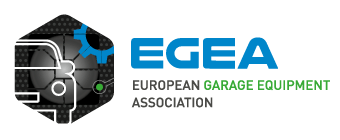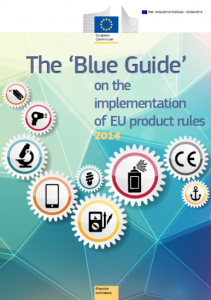EGEA supporting independent emission testing in the EU throughout the whole life cycle of the vehicle!
EGEA, the European Garage Equipment Association, represents the interests of 12 national associations/industry members, which includes the majority of test equipment manufacturers who manufacture and support vehicle test equipment used throughout Europe, including vehicle emissions testing, for type-approval, roadworthiness periodical testing and service and repair workshops.
EGEA welcomes that the EMIS committee ongoing investigations call for better automotive emission measurements and monitoring, but as a balanced view between the environment and the industry.
EGEA supports this balanced approach, but additionally calls on the members of the European Parliament to ensure continued compliance throughout the whole life cycle of the vehicle.
Indeed, in-service conformity emission testing should be made more robust by improving the existing Periodic Technical Inspection (PTI) emission tests to provide direct and independent in-use emission assessments of the vehicles on Europe?s roads. This is also increasingly important for both direct injection petrol engine vehicles, which are a source of particulates as well as for diesel engine vehicles, which are the principal sources of both NOx emissions and of particulates.
However, in spite of the recent VW ?defeat devices? issue, PTI legislation is introducing a new test method where the vehicle is allowed to test itself (OBD testing), without any independent assessment. This situation arises as part of the Roadworthiness Directive 2014/45/EU, where independent emission testing using direct tailpipe measurement (measured at the end of the exhaust), can be replaced with an on-board diagnostic (OBD) test for Euro 6/VI vehicles.
The OBD system is not an emissions test, but is a diagnostic monitoring of the components that are part of the vehicle?s emission control system. A recent independent study by CITA (International Motor Vehicle Inspection Committee) and with extensive PTI testing evidence from France who have already introduced OBD tests, has shown that measurements via the OBD system are not sufficient to ensure that the exhaust emission levels continue to comply with the requirements.
OBD and tailpipe measurements provide different methods to find errors and are complementary, rather than being interchangeable. Both measurement methods are needed to be able to measure the correct functioning of the exhaust control system and for independent testing of the actual vehicle emissions.
For example, it is well known that many diesel vehicles have had their particulate filter or the EGR (exhaust gas re-circulation system) modified or removed and the engine management software changed to circumvent the OBD monitoring to avoid performance problems, especially in urban environments.
New vehicles emit lower levels of noxious exhaust emissions, creating the need to introduce emission test equipment that can accurately measure these lower levels to ensure continued compliance with their environmental requirements. Several studies in measuring particulate matter, NOx and diesel smoke measurements have shown that the current measured values, which are included in the Roadworthiness Directive 2014/45/EU, can and should be revised to address the required lower levels of emissions.
Subsequently, Member States can implement new test methods using this emission measuring equipment to establish a precise procedure to ensure accuracy of the measurements at these lower ?fine smoke? limits as the basis for effective emission testing using a combination of OBD and tailpipe test methods. Critically, current practice from some vehicle manufacturers is to limit engine speed, which restricts accurate emission testing. EGEA is therefore calling upon European legislators to ensure that engine speed is not limited when conducting a PTI emissions test and that this functionality should be verified as part of the original vehicle type-approval.
EGEA together with colleagues from CITA is currently conducting the Sustainable Emission Testing (SET) II Study to develop applicable test methods for NOx measurement of after-treatment systems during periodic emission tests (for both petrol and diesel vehicles). The results of this study should provide a practical solution in PTI test centres to help ensure continued environmental compliance throughout the life of the vehicle.
EGEA recognises and supports the focus of the EMIS Committee for better type approval emission testing, but therefore also strongly calls for testing of the emissions to be extended to cover the whole life of the vehicle.
EGEA therefore calls on European and national policymakers to continue to independently and directly test emissions at the tailpipe as the default measuring method in combination with an OBD test. EGEA further calls on members of the European Parliament, and particularly members of the EMIS Committee, to support independent testing of vehicle exhaust emissions by directly measuring particulates and NOx contaminants as a robust control within the PTI test during the whole lifecycle of the vehicle. This would actively and positively contribute to minimizing the impact on human health and the environment of these noxious emissions.
Further technical considerations ?
To ensure that independent in-service monitoring of vehicle exhaust emissions provides a practical and robust assessment of the actual levels of the exhaust emissions being created by the vehicle being tested, EGEA propose the following levels and measurements should be used for direct tailpipe testing:
The PTI test limits for diesel vehicles (as shown in the “CITA SET study”) should be:
For diesel vehicles
- For Euro 3 vehicles, the current values are acceptable
- For Euro 4 vehicles because some are equipped with Diesel Particle Filters and the test limit value should be the vehicle?s ?plate? value, but with a maximum value of 1.0 m-1 when measured using the existing free acceleration test method. For Euro 5 and later vehicles, an overall limit for all diesel vehicles of 0.2 m-1 is recommended, when measured using the existing free acceleration test method.
For vehicles whose Diesel Particulate Filters (DFPs) are not functioning correctly and to satisfy the above limit values, it is necessary to use a high resolution smoke meter which has a resolution of 0.001 m-1 K-value.
Furthermore and specifically for diesel vehicles, the following parameters from the OBD could also be recorded and evaluated :
- Maximum engine speed settings*
- Time taken to conduct each ?free acceleration? to ensure consistent and accurate test procedures
Additionally, the use of OBD data will provide additional important information for the emissions test for both petrol and diesel vehicles e.g. :
- Engine temperature
- Engine speed*
- Diagnostic trouble codes (DTC?s), system readiness monitors, after-treatment system status etc.
SETII study is assessing the most effective test methods to measure NOx and to detect if the DPF is still fitted and working correctly.
* Some vehicle manufacturers limit the engine speed when the vehicle is stationary, restricting accurate emission testing.
For any further information, please contact the EGEA Secretariat:






